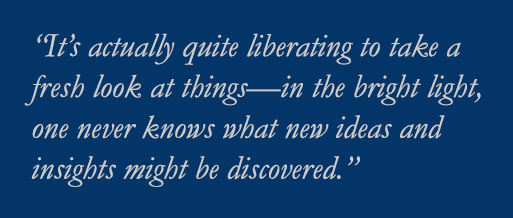Complex tasks require sustained attention and coordination of skills over long periods of time. Distraction and inattention, even momentarily, can result in accidents. Over-the-road commercial truck drivers, for example, have explicit dictates in their CDL Manuals to avoid distractions while driving. The Federal Motor Carrier Safety Regulations impose similar requirements. And in 2011, the US Department of Transportation announced a rule specifically prohibiting interstate truck and bus drivers from using hand-held cell phones while operating their vehicles.[1]
An interesting question arises: Do those who rank themselves highly perform better than those who do not? A recent article addresses the phenomenon of “optimism bias” in connection with commercial truck drivers.[2] “Optimism bias is a systematic error in perception of an individual’s own standing relative to group averages, in which negative events are seen as less likely to occur to the individual than average compared with the group, and positive events as more likely to occur than average compared with the group.”
One would think that those drivers who ranked themselves as being highly skilled would have fewer driving errors than those who did not. In fact, the contrary is true. The authors determined that those who ranked their driving skills as higher actually had a greater incidence of driving errors: “With those who reported being “skilled” as the referent, drivers reporting being “very skilled” had more speeding over lane deviations (RR 1.22, 95% CI = [1.15, 1.30]), eye glances off the road (RR 1.06, 95% CI = [1.04, 1.09]), and total violations (RR 1.15, 95% CI = [1.10, 1.21]), which encompassed speeding violations over 15 mph, space management, collisions, and lane deviations. Those who reported themselves as “somewhat skilled” had significantly fewer instances of speeding over 15 mph (RR 0.45, 95% CI = [0.26, 0.78]).”
In general, one’s self-evaluation tends to be overly encouraging and optimistic: in the above study, those drivers who believed themselves to be “very skilled” actually had a greater incidence of driving errors. The authors concluded: “Consistent with previous attempts to examine optimism bias in drivers of passenger vehicles (White et al., 2011), this study’s findings suggest that some commercial truck drivers tend to over-estimate their own driving skills, with those who rated themselves as “very skilled” driving less cautiously than drivers wh o rated themselves as “somewhat skilled.” These findings are consistent with other widely-known theories such as the Dunning–Kruger effect which describes a cognitive bias in which low-ability individuals hold fast to an illusory superiority, mistakenly assessing their ability to be much higher than it actually is.
o rated themselves as “somewhat skilled.” These findings are consistent with other widely-known theories such as the Dunning–Kruger effect which describes a cognitive bias in which low-ability individuals hold fast to an illusory superiority, mistakenly assessing their ability to be much higher than it actually is.
Optimism bias, of course, is not restricted to truck drivers. Others in every field, including the professions, share the same myopia. We tend to overestimate our abilities for any number of reasons. We are unwilling (or unable) to look objectively at our own skill set. We do not engage in accurate measurement, and thus have no real basis to evaluate and compare. We view our own techniques and methods as superior since we’ve always used them and they’ve always worked.
Can objectivity be restored and optimism bias minimized? Yes, but doing so requires taking a critical look at every aspect of one’s behavior and performance and making corrections and changes on an ongoing basis. Honest feedback is required. A bit of humility goes a long way as well.
Can such objectivity have real world consequences? The authors note: “Since 2009, fatality and injury rates from large commercial truck and bus collisions have steadily increased, contrary to the national trend of overall truck fatal and non-fatal injury rates, which have declined (U.S. Department of Transportation [USDOT] & Federal Motor Carrier Safety Administration [FMCSA], 2013). Taking into account death, injury, and property losses, large commercial truck and bus crashes cost Americans an estimated US $87 billion in 2011, an increase from 2010’s US $84 billion and 2009’s US $79 billion.”
Optimism bias can be overcome. The first task is to recognize its existence; the second, is to address it systematically using objective measures. It’s actually quite liberating to take a fresh look at things—in the bright light, one never knows what new ideas and insights might be discovered.
[1] FMCSA, U.S. Transportation Secretary LaHood Announces Final Rule That Bans Hand-Held Cell Phone Use by Drivers of Buses and Large Trucks, https://www.fmcsa.dot.gov/newsroom/us-transportation-secretary-lahood-announces-final-rule-bans-hand-held-cell-phone-use (November 23, 2011).
[2] Despina Stavrinos, et al., Commercial Truck Driver Health and Safety: Exploring Districted Driving Performance and Self-Reported Driving Skill, Workplace Health and Safety, Pgs. 369—376 (Vol. 64, No. 8 January 25, 2016). http://journals.sagepub.com/doi/pdf/10.1177/216507991562020




